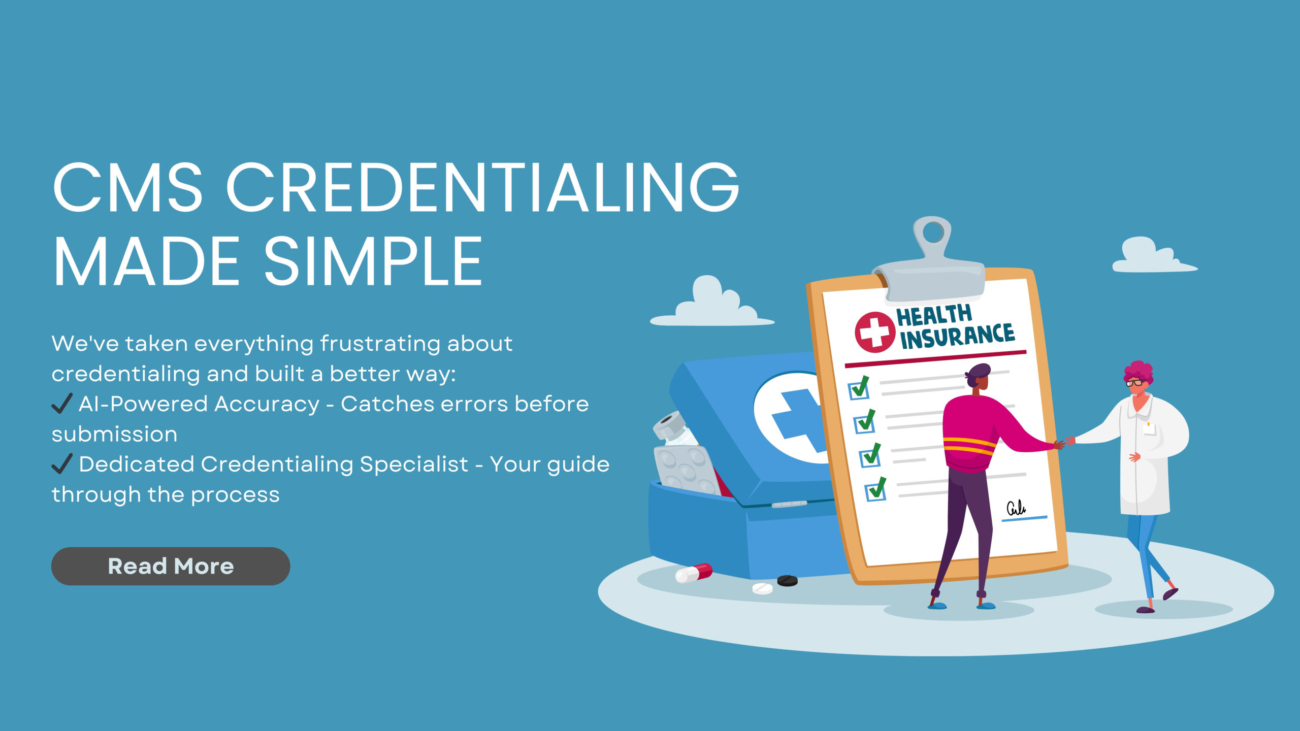The good news?
With the right Medicaid billing steps, it soon becomes routine.
Whether you run a solo office, work in a group practice, or have just joined a Medicaid plan, you need a clear roadmap for the entire process.
This guide from XyberMed gives you exactly that.
What makes Medicare and Medicaid different from each other?
Medicare and Medicaid are both government health insurance programs, but they are for different people and have different goals.
Medicare
Medicare is a government insurance program for:
-
The elderly, 65 and older
-
The disabled, younger people with special medical conditions
The Basics:
The federal government runs it, so benefits/rules are the same everywhere
-
Coverage is available to most people starting at retirement age
Medicaid
Medicaid is designed for individuals and families with low income, including:
-
Children
-
Pregnant women
-
Seniors
-
People with disabilities
Key Features:
-
Jointly run by federal and state governments, so rules and coverage can vary by state
-
Available to eligible individuals of any age
Dual Eligibility
Some individuals qualify for both Medicare and Medicaid—these are known as “dual eligibles.” They may receive enhanced coverage, often with reduced out-of-pocket costs.
Step-by-Step Guide to Billing Medicaid as a Provider
1. Enroll as a Medicaid Provider
You must be enrolled as an authorized Medicaid provider in your state before you can submit any claims. The following steps are commonly included in the enrollment process:
Using the Medicaid website in your state to complete an application
-
Filling out an application on your state’s Medicaid website
-
Submitting licenses, credentials, and NPI
-
Background checks and compliance screenings
XyberMed can assist healthcare practices with fast and accurate Medicaid credentialing services to avoid delays.
2. Verify Patient Eligibility
Before offering services, confirm that the patient qualifies for Medicaid. This ensures the service will be covered and helps avoid denials. Utilize the Medicaid clearinghouse software or provider portal in your state to:
-
Confirm active coverage
-
Review service limitations
-
Check co-payment responsibilities
3. Use Accurate Codes and Documentation
Billing Medicaid requires the use of proper medical coding systems, including:
-
ICD-10 codes for diagnoses
-
CPT or HCPCS codes for procedures and services
Always maintain accurate documentation to justify the services billed. Incorrect codes or incomplete documentation are leading causes of claim rejections.
4. Submit the Claim
Once verified and coded, submit your Medicaid claim electronically via:
-
Your EHR/EMR system
-
State Medicaid billing portal
-
Clearinghouse platform
Make sure you follow your state’s specific submission format and timelines.
5. Track Claim Status and Handle Denials
After submission, monitor your claim status regularly. In case of a denial, you will receive a Remittance Advice (RA) explaining the reason. Common causes of denials include:
-
Eligibility issues
-
Invalid or missing codes
-
Late submission
At XyberMed, our medical billing specialists can identify and resolve claim issues quickly, reducing delays in Reimbursement.
6. Receive Reimbursement
Once the claim is approved, Medicaid will issue reimbursement either via direct deposit or by check. The amount may vary depending on:
-
State-specific Medicaid fee schedules
-
Prior authorization requirements
-
Deductibles or co-payments
7. Fix and Resubmit Denied or Rejected Claims
A denial is normal. It just means something on the claim needs a quick edit. Most states let you correct and resend, as long as you do it within their time limit (often 90–180 days from the date of service).
a) Read the denial note
Look at the Remittance Advice, EOB, or your portal. Find the short code that tells you what went wrong.
-
CO-16 – missing or wrong info
-
PR-49 – patient not eligible that day
-
CO-96 – wrong code or modifier
-
CO-109 – service not covered
b) Fix the problem
-
Correct any typos in the patient name, Medicaid ID, or date of birth.
-
Add the right modifier (-25, -59, etc.).
-
Swap in the correct diagnosis or procedure code.
-
Include the PA number if you left it off.
-
If the denial is based on medical need, attach your notes or test results to demonstrate why the service was necessary.
c) Resend the claim
Use the same route you used before—portal, clearinghouse, or EHR. Mark it as a corrected claim if your state requires it. Some states want the original claim number or a resubmission code (often “7” for a replacement claim).
d) Watch the deadline
Send the fix before the timely-filing window closes. If you are already past it, file an appeal right away and explain why you could not meet the deadline (for example, a system outage or mail delay).
e) Keep a simple denial log
Write down each denial in a list:
-
Patient name and service date
-
Denial reason
-
Date you fix it
-
Date you resent it
-
Final result
Seeing the patterns helps you prevent the same mistake next time.
Common Challenges in Medicaid Billing
-
State Variations: Common Issues with Medicaid Billing. Every state has its laws, forms, and procedures.
-
Complex Requirements: Compared to private payers, Medicaid frequently demands more thorough documentation.
-
Delayed Payments: Compared to private payers, Medicaid frequently demands more thorough documentation.
The XyberMed RCM team can help reduce these obstacles by providing experienced Medicaid billing services that are customized for your state.
Why Partner with XyberMed for Medicaid Billing Services?
XyberMed has you covered. We offer support and services for medical providers, clinics, and facilities all across the United States. Our services include:
-
Medicaid Credentialing and Enrollment
-
Eligibility Verification tools and support
-
Accurate Coding and documentation checks
-
Claim Submission & Denial Management
-
Revenue Cycle Optimization
We help you get paid faster while maintaining compliance and efficiency in your billing operations.
Conclusion
Billing Medicaid as a provider can be complex. When done correctly, it’s not difficult. Get the right help and systems in place, and you can optimize your Medicaid billing and increase revenue, whether you are a one-practitioner practice or a multi-location health care organization. XyberMed can help you optimize your Medicaid billing process and maximize revenue.
Need Help with Medicaid Billing?
For a free consultation with our billing experts, please contact XyberMed today. Let us help you streamline the process and receive the compensation you are due.




